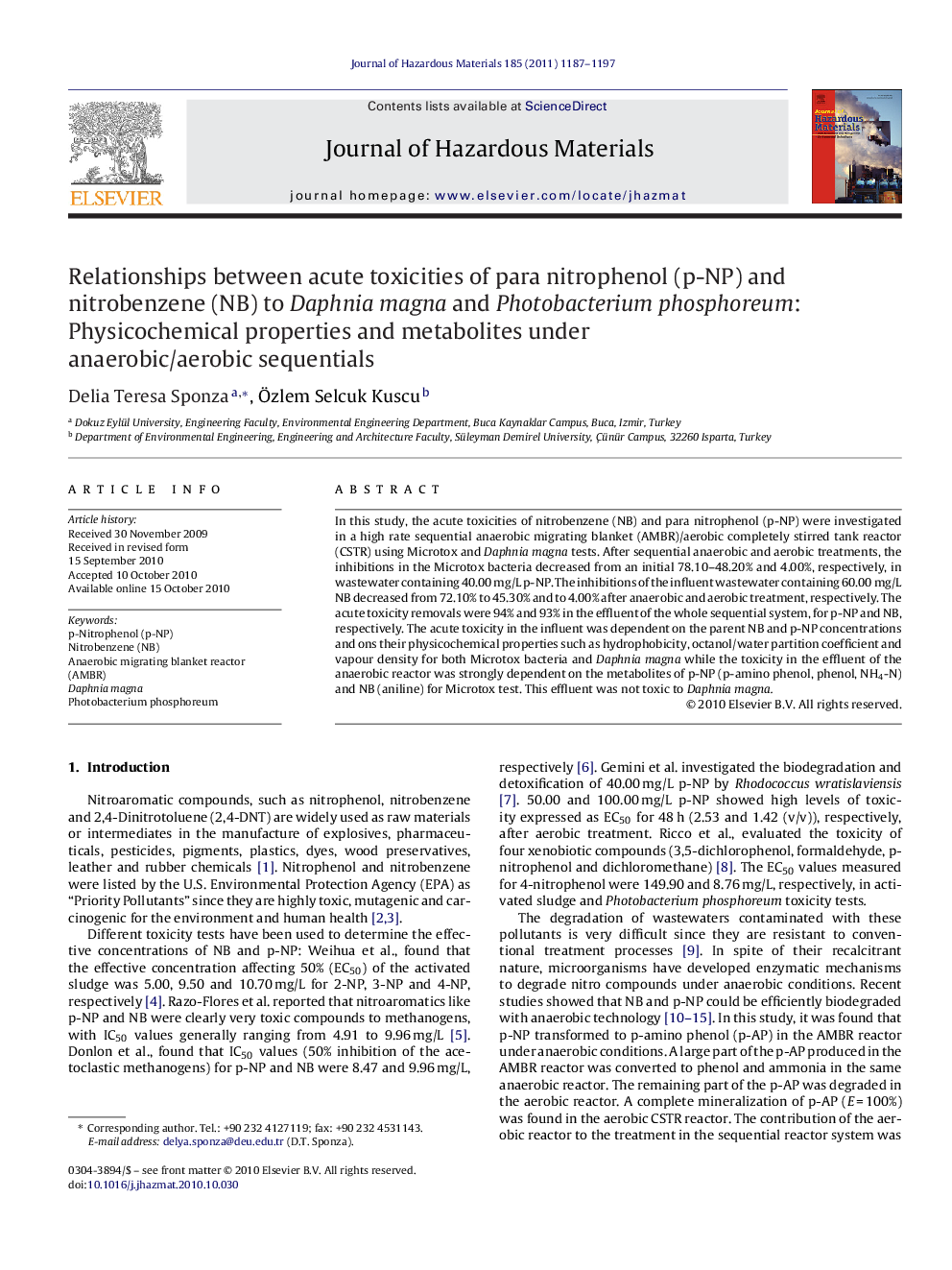| Article ID | Journal | Published Year | Pages | File Type |
|---|---|---|---|---|
| 579908 | Journal of Hazardous Materials | 2011 | 11 Pages |
Abstract
In this study, the acute toxicities of nitrobenzene (NB) and para nitrophenol (p-NP) were investigated in a high rate sequential anaerobic migrating blanket (AMBR)/aerobic completely stirred tank reactor (CSTR) using Microtox and Daphnia magna tests. After sequential anaerobic and aerobic treatments, the inhibitions in the Microtox bacteria decreased from an initial 78.10-48.20% and 4.00%, respectively, in wastewater containing 40.00Â mg/L p-NP. The inhibitions of the influent wastewater containing 60.00Â mg/L NB decreased from 72.10% to 45.30% and to 4.00% after anaerobic and aerobic treatment, respectively. The acute toxicity removals were 94% and 93% in the effluent of the whole sequential system, for p-NP and NB, respectively. The acute toxicity in the influent was dependent on the parent NB and p-NP concentrations and ons their physicochemical properties such as hydrophobicity, octanol/water partition coefficient and vapour density for both Microtox bacteria and Daphnia magna while the toxicity in the effluent of the anaerobic reactor was strongly dependent on the metabolites of p-NP (p-amino phenol, phenol, NH4-N) and NB (aniline) for Microtox test. This effluent was not toxic to Daphnia magna.
Related Topics
Physical Sciences and Engineering
Chemical Engineering
Chemical Health and Safety
Authors
Delia Teresa Sponza, Ãzlem Selcuk Kuscu,
